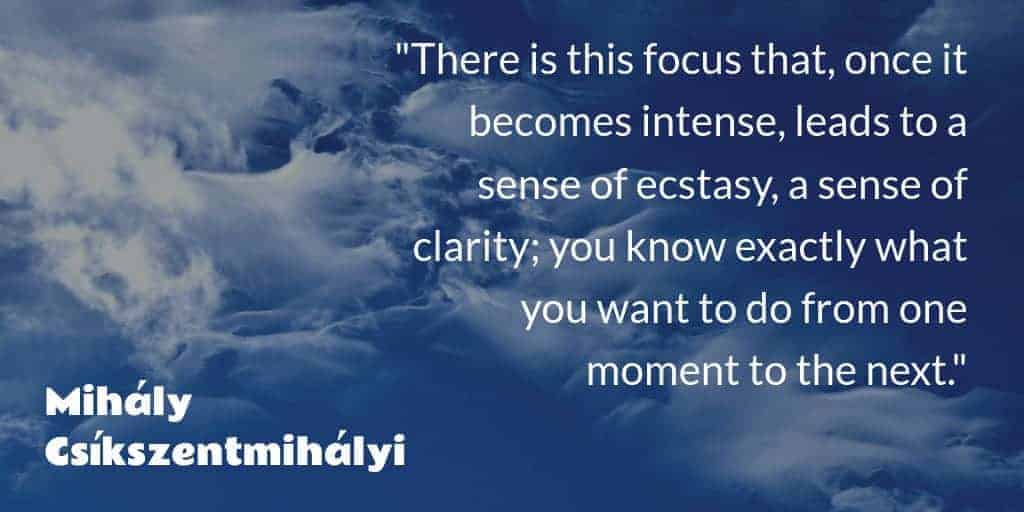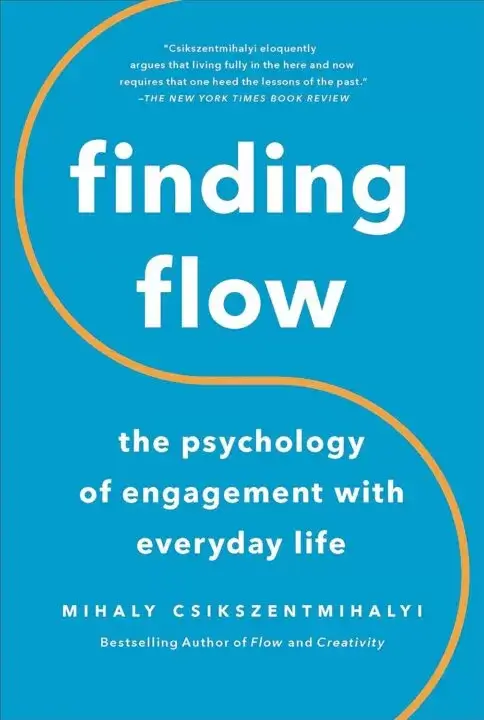Reading time: 9 minutes
— Researched and written by Dr. Sandip Roy.Ever found yourself so engrossed in a task that everything else just fades away?
This is called the “flow state,” a mental zone where you’re so dialed into your work that distractions, time, and even biological needs like hunger and thirst become footnotes.
It’s easy to get into flow in personal activities, like enjoying songs or reading a novel. But it’s harder to get into a flow state at work.
And that’s what we’re here to tackle: How to get into a flow state and unleash your full potential at work.
How to get into a flow state at work?
Flow lets you focus deeply on your task, making you forget the outside world and time.

Here are 5 ways to make your productivity soar by finding flow at work:
1. Identify Your Flow Triggers Through the Right Activities
The flow state emerges when you choose activities that trigger flow — tasks that are both interesting and challenging.
Flow isn’t accidental; it’s engineered.
To tap into this high-performance state, you need to zero in on activities that are not just fascinating, but also stretch your abilities.
The key is to find that sweet spot where the task is engaging enough to hold your attention but challenging enough to push your skills to the limit.
Once you’ve identified these “flow-triggering” tasks, schedule dedicated time slots for them. Mark them as “Flow Time” in your planner.
Whether you thrive on solving complex problems or get a kick out of mastering the latest tech, allocate focused time for it daily.
Make it known to your team that this is your “flow time,” a period when you’re off-limits for other tasks or interruptions.
2. Balance The Skill-to-Challenge Ratio For Optimal Flow
To hit that flow state, the task at hand should push you right to the edge of your skill set—no more, no less.
Too hard, and you’ll feel overwhelmed and tempted to throw in the towel because it’s draining your time and energy.
Too easy, and you’ll disengage, dismissing the task as a bore.
So the real secret sauce to achieving flow lies in fine-tuning the task’s challenge level to your own skill set.
It’s about finding that razor’s edge where the task is demanding enough to fully engage you but not so tough that it’s discouraging.
Always remember, flow isn’t about waiting for the stars to align; it’s about aligning them yourself.
Don’t wait for the “right moment” to get into flow—create it. Find a task that has clear goals, matches your skill, and gives quick feedback.
Take these examples to help you understand this skill-challenge equation.
- Suppose you are a coder. If you rate yourself above the beginner level, you could practice your coding skills with AI tools like Copilot and ChatGPT to achieve the skill-challenge balance.
- Suppose you work in the marketing department. Then you must stay current with “marketing psychology” to devise the most effective strategies for your company.

It was psychologist Mihaly Csikszentmihalyi who first described “flow” as an “optimal experience” where a person becomes one with the task they are doing. The deep focus leaves no room for attending to other things.
The universal precondition for flow is that a person should perceive that there is something for him or her to do, and that he or she is capable of doing it.
— Isabella Selega & Mihaly Csikszentmihalyi, Optimal Experience, 1992
3. Practice Mindfulness To Supercharge Your Focus
Improving focus isn’t a quick fix; it’s a long-term commitment that requires consistent effort. And one of the most potent tools in your arsenal for this is mindfulness.
Mindfulness isn’t just a trendy term; it’s a transformative practice in your personal and professional life.
When you’re mindful, you’re not merely present; you’re fully engaged in the here and now.
This deep present-awareness accelerates your entry into a flow state at work, making tasks easier and outputs better.
A mindfulness habit enables you to remain fully aware and accepting of your current environment.
It prevents automatic, reflexive actions that often lead to disinterest, despair, or distractions.
To get better at mindfulness and improve your focus, make some clear rules.
- Tell your team that you have a “focus time” and you shouldn’t be disturbed then.
- Turn off or filter out your computer and mobile notifications that break your concentration.
- Make it a discipline to stick with, and practice it every day; the more you do it, the easier it becomes.
4. Harness Your Imagination To Unlock Flow
You don’t need to get your hands dirty to find your flow; your imagination is a powerful tool for this.
Close your eyes and vividly picture the task you’re tackling. This mental rehearsal isn’t just for athletes or musicians; it’s a proven technique to help anyone enter “the zone.”
Think of it like reading a gripping novel. Your imagination creates vivid scenes and emotions, making the experience as real as any physical adventure.
This imaginative process isn’t just enjoyable; it’s a practical way to improve your performance over time.
As you keep practicing this mental exercise, you’ll find it easier to slip into flow.
Your memory will quickly recall the experience, and your logical thinking will help you fine-tune your approach, smoothing out any rough edges.
So, give your imagination free rein and invite flow into your work life.
5. Set Goals That Ignite Your Potential
Goals aren’t just checkboxes on a to-do list; they’re the fuel that drives your personal and professional growth.
“What gets measured gets done,” so goes the saying. To measure your progress, first have a measuring stick marked with your goals.
These goals should do two things: resonate with your passions and push you out of your comfort zone.
In the grand scheme of things, we all need a ladder of increasingly ambitious goals to climb. These goals propel us forward and give our lives a sense of purpose and direction.
But if your goals don’t challenge you, you risk stagnating, sliding down from “good” to “average,” and eventually to “inadequate.”
Say, you settled for a promotion in operations management, but you were keen to explore your old passion in graphic design. It can lead you to a wall of disinterest, which will make you sneak out the back door.
Find the three best ways to set goals: 3 Highly Effective Goal Setting Techniques.
Why do you need flow at work?
In today’s work environment, distractions are the norm, not the exception. That’s why achieving flow is a game-changer.
When you’re in flow, you’re not just working; you’re performing at your peak. You’re so in sync with your tasks that challenges don’t intimidate you; they energize you.
It’s the sweet spot where your skills and the task’s demands meet, propelling you to levels of productivity and focus you didn’t think were possible.
The result? Not only do you get more done, but you also find real joy and satisfaction in your work.
FAQs
What is the “flow” state?
Flow state is a mental state where you’re fully immersed in the task at hand. You’re so engaged that you lose track of time and external distractions. It’s about being completely present in the moment.
Why is achieving a flow state important?
Achieving a flow state at work can be a game-changer for your work performance. It can boost productivity, sharpen task focus, and enhance creativity. Flow state facilitates peak productivity with the most engagement and the least conscious effort.
How can you get into a flow state at work?
To get into a flow state at work, you need to create a distraction-free zone. Use techniques like the Pomodoro Technique for time management and practice mindfulness to learn to be present in the moment. Also, it’s critical to match task difficulty with your skill level.
What are the benefits of achieving a flow state at work?
Three benefits of getting into a flow state are:
i. Increased productivity
ii. Better focus
iii. Enhanced creativityWhat are the common barriers to achieving flow?
Common barriers to flow include distractions, stress, and lack of interest in the task. These obstacles can disrupt your flow state productivity.
How to overcome barriers to achieve flow?
To overcome these barriers, you need to create a distraction-free zone and practice mindfulness. Mindfulness and flow state go hand in hand in helping you manage stress and maintain focus.
What are some practical tips to maintain a flow state?
To maintain your flow state, consider these tips:
i. Take short breaks to recharge.
ii. Use tools to track your flow state and see where you can improve.
iii. Reflect on your performance and adjust your strategies accordingly. Task matching and flow state are crucial for this reflection process.
Final Words
We can choose to enter flow whenever we are craving that deep state of calm happiness.
I couldn’t have said it better than Michael Hedrick, a writer and photographer who has lived with schizophrenia for many years, and written Connections: The Journey Of A Schizophrenic:
All I ask is that you don’t close your minds to the notion that we could all find that thing (called flow) which makes us happy. We don’t have to make a living out of it, we just have to know that it’s there in case we need it.
Remember, flow comes from activity, not passivity. It usually emerges when you are engaged in some favorite activity. So, here’s how to quickly get into a flow state at work:
Love your work or find work that you love.
√ Please share it with someone if you found this helpful.
√ Also Read:
- What Is “Flow” (How To Find This Authentic State of Joy)
- 7 Reasons Why Happiness Is Important | Why Be Happy?
- How Long Does Brain Fog Last & How To Clear It Quickly?
- 10 Practical Strategies To Overcome Workplace Depression
- How To Be Happy: 25 Science-Backed Tips For A Happy Day
• Our Story!

